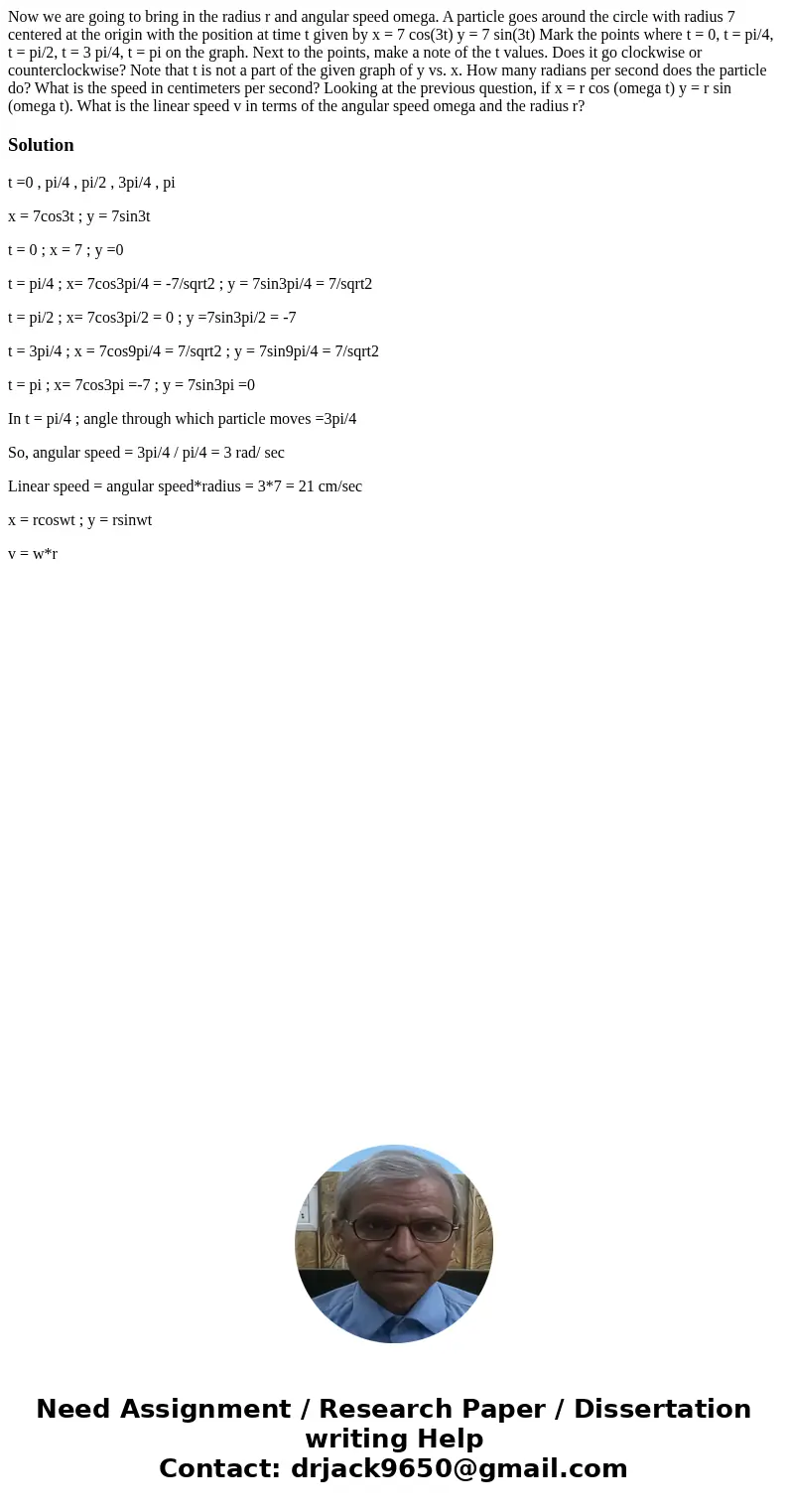Now we are going to bring in the radius r and angular speed
Now we are going to bring in the radius r and angular speed omega. A particle goes around the circle with radius 7 centered at the origin with the position at time t given by x = 7 cos(3t) y = 7 sin(3t) Mark the points where t = 0, t = pi/4, t = pi/2, t = 3 pi/4, t = pi on the graph. Next to the points, make a note of the t values. Does it go clockwise or counterclockwise? Note that t is not a part of the given graph of y vs. x. How many radians per second does the particle do? What is the speed in centimeters per second? Looking at the previous question, if x = r cos (omega t) y = r sin (omega t). What is the linear speed v in terms of the angular speed omega and the radius r?
Solution
t =0 , pi/4 , pi/2 , 3pi/4 , pi
x = 7cos3t ; y = 7sin3t
t = 0 ; x = 7 ; y =0
t = pi/4 ; x= 7cos3pi/4 = -7/sqrt2 ; y = 7sin3pi/4 = 7/sqrt2
t = pi/2 ; x= 7cos3pi/2 = 0 ; y =7sin3pi/2 = -7
t = 3pi/4 ; x = 7cos9pi/4 = 7/sqrt2 ; y = 7sin9pi/4 = 7/sqrt2
t = pi ; x= 7cos3pi =-7 ; y = 7sin3pi =0
In t = pi/4 ; angle through which particle moves =3pi/4
So, angular speed = 3pi/4 / pi/4 = 3 rad/ sec
Linear speed = angular speed*radius = 3*7 = 21 cm/sec
x = rcoswt ; y = rsinwt
v = w*r

 Homework Sourse
Homework Sourse